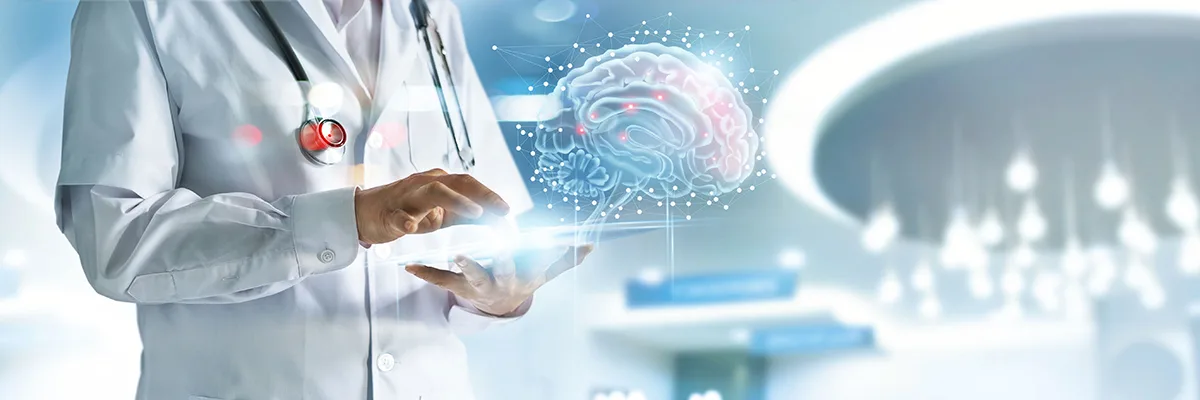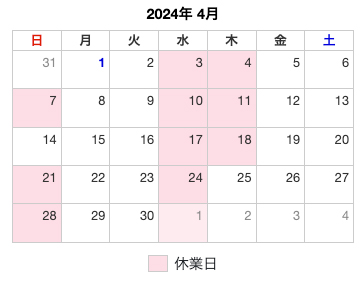Treatment of sequelae of dementia and cerebral infarction paralysis
Treatment of sequelae of dementia and cerebral infarction paralysis
Free medical treatment (not covered by insurance)
Treatment of aftereffects of stroke such as dementia, cerebral infarction, and cerebral hemorrhage
In this hospital, we are treating the sequelae of stroke, dementia treatment, and intractable diseases such as cerebral infarction and cerebral hemorrhage as cytokine therapy.
Even today, with advances in medical science, there is generally no effective treatment for the after-effects of cerebral hemorrhage and cerebral infarction, and patients rely solely on rehabilitation such as physical therapy for recovery.Currently, there are no effective drugs or treatments for dementia, and various drugs can only suppress the progression of symptoms.It is said that brain nerve cells cannot be recovered after 6 months from the onset of the disease, and treatment for the after-effects of a chronic cerebral infarction is carried out at all medical institutions with the sole aim of maintaining residual function through physical therapy such as rehabilitation. No targeted active treatment.In recent years, advances in medicine have shown that brain nerve cells can also recover.It is a treatment method that restores and reconstructs destroyed tissues by using the cells and recovery abilities of the patient's own body.It is expected that recovery from medical conditions, which was previously thought to be impossible, will be improved. (In effect there are individual differences.)

What is deciduous pulp-derived cytokine cocktail (STEM CELL culture supernatant) therapy?
Reduction of sequelae after cerebral infarction (cerebral hemorrhage)
Cytokine cocktail therapy is a restorative treatment that uses culture supernatant derived from deciduous dental pulp Stem Cells, and has been reported to reduce the aftereffects of cerebral infarction (cerebral hemorrhage).At Sapporo Medical University, we have reported cases in which patients who had difficulty walking due to paralysis caused by spinal cord injury improved their symptoms after administering autologous cells, and were able to walk independently after a few weeks. .However, when performing Stem Cell transplantation treatment, since the number of adult Stem Cells is small, it is necessary to increase the number of cells by culturing to achieve a certain degree of effectiveness.However, problems have been pointed out as it has been reported that changes at the gene level that occur during this culture process may cause the cells to turn into tumors (cancer).Subsequent research has shown that the effects of Stem Cell transplantation therapy are that the administered Stem Cells themselves contribute only a small amount to the repair of damage, and that most of the effects are due to cytokines (growth factors) released from the administered Stem Cells. It was found that self cells receive and repair damage.In fact, Nagoya University has reported that by using cytokines that are in charge of the command system of each tissue released from Stem Cells, it is as effective as Stem Cell transplantation treatment.Cytokines released from dental pulp-derived stem cells have also been shown to have an effect on brain nerve cells, and it has been reported that motor paralysis, a sequela of cerebral infarction, has been alleviated.
*Currently, unfortunately, there have been no reports showing its effectiveness in treating brain dysfunction after cerebral infarction, and only in relation to motor paralysis (movement disorder).
Protocols such as dosage, administration period, and subjects have not yet been established, and it is not a treatment method with established evidence. It is known that the culture medium used to culture Stem Cells contains several hundred times more cytokines than normal adults.It has been reported that compared to the supernatant derived from adipose stem cells, it does not cause inflammation and is highly effective.This culture medium containing a large amount of cytokines is called a cytokine cocktail (Stem Cell culture supernatant).Cytokines do not cause tumor (cancer).In addition, dental pulp-derived cytokine cocktail therapy is attracting attention as a recovery treatment that can be expected to have the same level of therapeutic effect as stem cell transplantation therapy.
Indication symptoms
- Skin aging
- paralysis
- Motor dysfunction
- Impaired vision
- Dysphagia
- Aphasia disorder
- dementia
- Motor dysfunction in the chronic phase after cerebral infarction
- Peripheral nerve palsy
Indication disease
- Glaucoma
- Optic nerve atrophy
- Auditory neuropathy
- Brain dysfunction due to traffic injury
- allergic rhinitis
- Diabetic neurosis
- Alzheimer's dementia
- Amyotrophic lateral sclerosis (ALS)
- Parkinson's disease
- Various neurodegenerative diseases
Characteristics of deciduous pulp STEM CELL and cytokine cocktail
Nasal administration
- (1) Pathway from the olfactory bulb through the cell stroma to the brain intervening part
- (2) Pathway from the trigeminal nerve to the brain stem and spinal cord
- (XNUMX) Capillaries in the mucous membrane allow cytokines to reach the brain in a shorter time and at higher concentrations than by oral administration or intravenous drip.
| Treatment time | A few seconds (10 to 15 minutes on your back) |
|---|---|
| Number of treatments | 1 times at 10-XNUMX week intervals |
| Side effects | None |
| Pain after treatment | Report does not. |
| Treatment effect manifestation | Although it varies from person to person, you may be able to feel it the next day. |
Current situation and issues regarding stem cell culture supernatant and exosome therapy in Japan
Currently, many medical institutions that perform self-pay treatment, especially medical institutions that provide cosmetic treatment, are administering stem cell culture supernatant liquid as part of their regenerative medicine business using multiple administration methods for various purposes. The growing interest in stem cell culture supernatant liquid has been linked to the aesthetic medicine business and regenerative medicine business, and many corporations selling stem cell culture supernatant liquid have sprung up in Japan. Stem cell culture supernatant liquid is expected to have many benefits for medical institutions that handle it, such as regenerative medicine that can be performed easily regardless of the Regenerative Medicine Safety Act, high profits expected, topicality, and short treatment times. A rapidly increasing number of medical institutions are introducing treatment using . At the 111th Japanese Society of Cosmetic Surgery held the other day, three presentations and special lectures were held and attracted attention. Despite the widespread use of stem cell culture supernatants, safety and ethical issues have emerged, and each manufacturer and seller has their own methods of procuring, manufacturing, storing, and selling cells that serve as raw materials for pharmaceutical preparations. Currently, medical institutions are not fully aware of the details and safety of the drug, and the name is the only thing that precedes it, and it is not clear whether it is effective or who is responsible if a problem occurs. Large-scale clinical trials such as double-blind studies have not been conducted, and there are no established standards for administration reagents, administration methods, doses, and subjects, and medical institutions' own administration methods or manufacturer-recommended administration methods are not recommended. This is currently being done by law. In other words, there is currently no evidence at all, and companies dealing with stem cell culture supernatant liquid are popping up like bamboo shoots, each promoting their superiority by presenting data using their own unique analytical methods. Domestically, mainly
is sold as a stem cell culture supernatant, and there are various forms such as freeze-dried and cryopreserved. There has also been a problem in which stem cell culture supernatant fluid has been promoted because it has been confused with the recently talked about "exosomes." Not only is there no evidence of effectiveness, safety, or quality guaranteed, but there are also organizations that have even established their own incorporated associations to recommend the administration of stem cell culture supernatant fluids.
https://japan-saisei.org/about/
Companies that sell stem cell culture supernatant liquid are forced to give unreasonable discounts, or they buy cheap stem cell culture supernatant liquid that ignores quality and safety, and run flashy advertisements to increase treatment costs. There are also cosmetic surgery clinics that take and administer large doses.
Pharmaceutical safety, quality, and testing methods
There are many clinics that do this based on their own manuals, with no set standards and priority given to profit. Regarding stem cell culture supernatant liquid and exosome preparations, they are not drugs approved by the Ministry of Health, Labor and Welfare, but are reagents that doctors administer to patients under their own responsibility. For this reason, no clinical trials or large-scale clinical trials were conducted, and the manufacturer only analyzed the amount of his exosomes and cytokines using in vitro (test tube) data and presented it to medical institutions. Unfortunately, multiple deaths have occurred due to exosome infusion.
- Adipose stem cell culture supernatant liquid
- Milk dental pulp stem cell culture supernatant liquid
- Placental stem cell culture supernatant
- Umbilical cord stem cell culture supernatant liquid
https://japan-saisei.org/about/
Companies that sell stem cell culture supernatant liquid are forced to give unreasonable discounts, or they buy cheap stem cell culture supernatant liquid that ignores quality and safety, and run flashy advertisements to increase treatment costs. There are also cosmetic surgery clinics that take and administer large doses.
Pharmaceutical safety, quality, and testing methods
- Dose
- Administration interval
- Administration method
- Purpose of administration
Regarding the occurrence of death cases related to stem cell culture supernatant fluid
At this stage (October 29, 2023), the detailed cause and causal relationship with exosomes have not been reported, but it is a serious accident and should have been reported in the media, and should have been reported by the Accident Investigation Committee. It is considered necessary to establish a system immediately, conduct a thorough investigation of the cause of the fatal accident, take measures to prevent recurrence, and report to relevant organizations. I myself have received stem cell culture supernatant and exosome therapy, which have great potential, and intend to carefully incorporate them into my clinical practice, but I am trying to attract customers with exaggerated advertisements and advertisements at impossibly low prices. We are concerned about the existence and sales methods of cosmetic surgery clinics that administer reagents of low quality and whose safety is not guaranteed at all. If things continue as they are, various treatments using stem cell culture supernatants, which can be expected to be effective, may be subject to regulations from the Ministry of Health, Labor and Welfare, and their use may be restricted. We believe that risk management for the stem cell culture supernatant business can be carried out by accurately grasping and analyzing information on such stem cell culture supernatant fluids and carefully examining current issues and future directions. . Recently, in the beauty field, cosmetics companies are promoting stem cell cosmetics and cosmetics containing exosomes, and products introducing exosomes derived from human adipose stem cells from the Japan Stem Cell Cosmetic Evaluation Organization (PIA) have become more prominent, and the stem cell business is expanding beyond the medical field. It's busy. At our hospital, we only perform nasal therapy using stem cell culture supernatant, a reagent for which there is no evidence.
Intravenous fluids are not administered due to lack of evidence.
Prices
| Only the first medical examination fee | 10,000 11,000 No re-examination fee is required |
|---|---|
| Deciduous pulp Stem Cell supernatant liquid nasal treatment | 100,000 110,000 |
| Milk pulp Stem Cell supernatant liquid nasal treatment 6 times | 540,000 594,000 (Including the cost of high concentration hydrogen inhalation therapy) |
| Milk pulp Stem Cell supernatant liquid nasal treatment 10 times | 800,000 880,000 (Including the cost of high concentration hydrogen inhalation therapy) |
*The unit is ¥.
*The test is a free medical treatment (not covered by insurance).
*The test is a free medical treatment (not covered by insurance).
FAQ




